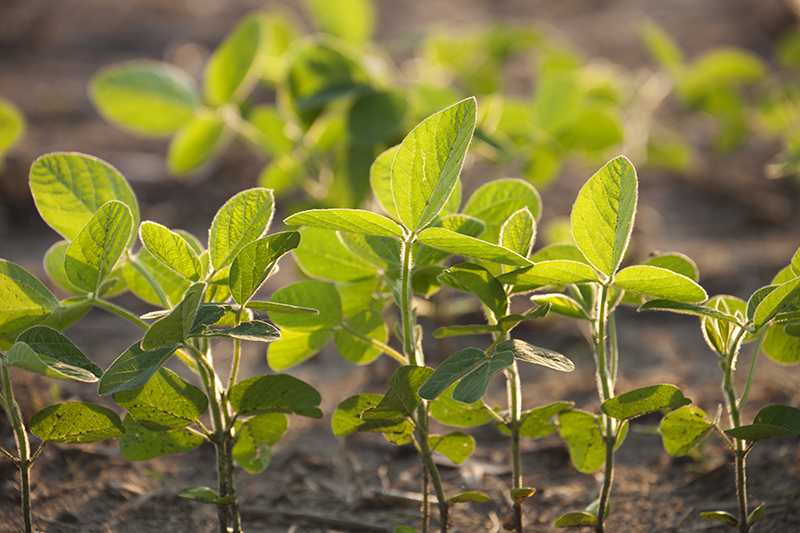Mosaic’s Pursuit Of 300 Program Kicks Off
 The only thing constant about weather across the Corn Belt this spring has been its unpredictability. Like the rest of their corn-growing peers, the six Pursuit of 300 Farmers have dodged raindrops, snowflakes and stubborn soil temperatures to finally begin their attempts at pushing toward 300-bushel-per-acre yields on 100-plus dedicated acres of their ground.
The only thing constant about weather across the Corn Belt this spring has been its unpredictability. Like the rest of their corn-growing peers, the six Pursuit of 300 Farmers have dodged raindrops, snowflakes and stubborn soil temperatures to finally begin their attempts at pushing toward 300-bushel-per-acre yields on 100-plus dedicated acres of their ground.
The Mosaic Co. introduced The Pursuit of 300: The Road to Higher Yields this past August. The program uses the real-world experiences of U.S. farmers as a launchpad for agronomists, researchers, retailers and industry stakeholders to discuss and create the next generation of cropping systems. The goal is a sustainable, profitable system that incrementally yields an increase in bushels of corn per acre. Six growers from six different states each have designated 100 acres or more to serve as their Pursuit Fields, and are chronicling their efforts at Pursuitof300.com.
“The start of the first full production year for the Pursuit of 300 has kicked off, and we’re very excited about it,” says Dr. Kyle Freeman, Manager of New Product Development for The Mosaic Co. “Each Pursuit Farmer is willing to try different strategies to see what adds incremental yield. We know that achieving high yields is more than just fertility; it takes all facets of the corn production chain to boost yields. The Pursuit of 300 gives farmers, retailers and the ag industry a platform to exchange information, ideas and best practices to boost yields.”
With the Pursuit Farmers gearing up for the first full production year of the Pursuit of 300, the excitement from the field for the opportunity to participate in the program is building as well.
“As a farmer, it’s only natural to be excited about starting our first full production year with the Pursuit of 300,” says Matt Lantz. “Reaching the 300-bushel barrier, or at least incrementally increasing our yields, is our goal and where our passion lies. We’re adopting new crop management strategies on our Pursuit Field under the guidance of our Mosaic agronomist and our retailer — Crystal Valley Coop — to push our 100 acres to be more efficient and productive. We’re looking forward to rising to the yield challenge, and excited to see what the tweaks in overall strategy will show at the end of harvest.”
Near Hoxie, KS, Mitchell Baalman planted his Pursuit Field April 29, about a week behind his target date. Baalman split his Pursuit Field (120 acres) with a center pivot into two halves to gauge the success of newly implemented practices. On one half of the field, Baalman planted 32,000 seeds per acre from a planter running between 5.4 and 5.5 miles per hour. Because Baalman is pushing populations to 36,000 plants per acre on the other half, he slowed the planter down 0.5 to 1 mph to hopefully establish a more precise stand.
At Hudson Family Farms in Crawfordsville, IN, Curt and Chris Hudson have battled an extremely wet spring, and were finally able to get planters rolling over their 170-acre Pursuit Field on May 7. The Hudsons planted at a variable rate that ranged from 28,000 seeds per acre to 42,000. Planting in 20-inch rows, the Hudsons ran their planter at 4.5 to 4.7 mph. New to the Hudson system is the addition of MicroEssentials SZ, to give the soil additional zinc and sulfur, which was applied to the field preplant.
Winter hung on an exceptionally long time for Matt and Luke Lantz, of Lake Crystal, MN, After unseasonably cold temperatures and even a couple of spring snowstorms, Lantz Farms planted its 160-acre Pursuit Field May 7 with precision planting equipment aimed at maximizing the return on its seed investment. The Lantzes also are experimenting with boron, applying the micronutrient preplant to replenish the effects of a corn-on-corn rotation.
Just outside Holland, IA, Dale Launstein was able to plant his Pursuit Field on May 13. Launstein’s 30-inch rows vary a population of 36,000 to 38,000 seeds per acre. He also added micronutrients to his fertilizer program, applying it this past fall.
At Prinz Farm and Feedlot, just outside of West Point, NE, this spring has been full of stops and starts, but on a farm in need of moisture, Todd Prinz certainly wasn’t complaining about the conditions. Prinz had retail partner Central Valley Ag apply MicroEssentials SZ in advance of planting on April 9, and expected to plant the field shortly thereafter. But once winter reemerged in Nebraska, it made itself at home, and it was May 13 before Prinz was able to plant his Pursuit Field, where he increased the seeding population to 38,000 per acre.
At Schoff Farms of Walnut, IL, James Schoff was able to take advantage of windows of relief from spring moisture, and planted his Pursuit Field on May 7. Schoff’s Pursuit Field plan for the 2013 season includes adding a foliar fertilizer application, increasing planting population by 3,000 plants per acre, the addition of MicroEssentials SZ to his fertility plan, and an increase in soil testing to better gauge his crop’s impact on next year’s fertility needs.
For more on each Pursuit Farmer and the system he’s implementing to reach 300-bushel corn, visit www.Pursuitof300.com.





